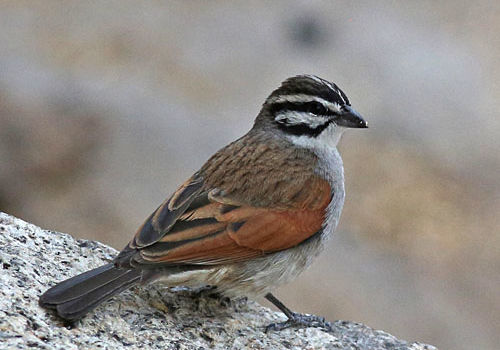
Cape bunting
Emberiza capensisCape bunting
Introduction: In Namibia, Cape buntings (Emberiza capensis) inhabit mopane savannah, saline desert, succulent steppe and dwarf shrub savannah. They are known to become tame around human settlements, with single observations common, as are pairs and family groups during the breeding season.
Distribution: There are 2 of the 9 subspecies of Cape bunting found in southern Africa found in Namibia. They are E.c. Capensis (central and north-western regions) and E.c. Bradfieldi (southern Namibia). Locations include Etosha National Park, Epupa Falls, Damaraland, the Orange River and Fish River Canyon.
Diet: Eats seeds, ants and termites.
Description: Variations between subspecies revolve mainly around the shades of brown and the streakings on the scapulars, back and mantle. The underpart colouration also differ from subspecies to subspecies.
Breeding: Untidy cup-shaped nests are made from rootlets, seeds, dry grass and hair. Eggs are laid from October to April and incubated for up to 16 days.
Size: 16cm.
Weight: 20g.
Klein Windhoek

